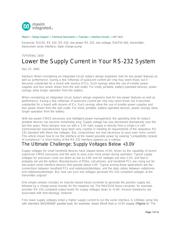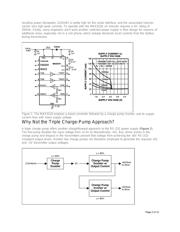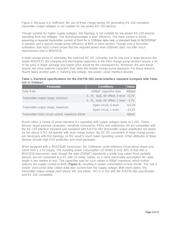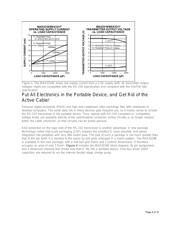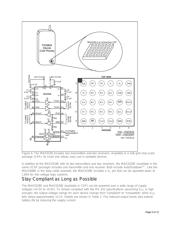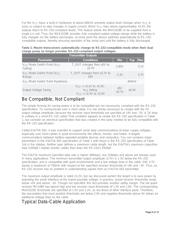Datasheet 搜索 > 接口芯片 > Maxim Integrated(美信) > MAX3218EAP+T 数据手册 > MAX3218EAP+T 其他数据使用手册 1/12 页
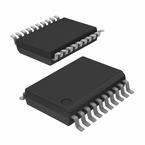
 器件3D模型
器件3D模型¥ 40.267
MAX3218EAP+T 其他数据使用手册 - Maxim Integrated(美信)
制造商:
Maxim Integrated(美信)
分类:
接口芯片
封装:
SSOP-20
Pictures:
3D模型
符号图
焊盘图
引脚图
产品图
页面导航:
技术参数、封装参数在P8
电气规格在P3P8
导航目录
MAX3218EAP+T数据手册
Page:
of 12 Go
若手册格式错乱,请下载阅览PDF原文件

Maxim > Design Support > Technical Documents > Tutorials > Interface Circuits > APP 1834
Keywords: RS232, RS 232, RS-232, low power RS 232, low voltage, EIA/TIA-562, transmitter,
transceiver serial interface, triple charge pump
TUTORIAL 1834
Lower the Supply Current in Your RS-232 System
Dec 27, 2002
Abstract: When considering an integrated circuit, today's design engineers look for low-power features as
well as performance. Saving a few milliamps of quiescent current per chip may seem trivial, but it
becomes substantial for a board with dozens of ICs. Such savings allow the use of smaller power
supplies and less power drawn from the wall outlet. For small, portable, battery-operated devices, power
savings allow longer operation from the battery.
When considering an integrated circuit, today's design engineers look for low-power features as well as
performance. Saving a few milliamps of quiescent current per chip may seem trivial, but it becomes
substantial for a board with dozens of ICs. Such savings allow the use of smaller power supplies and
less power drawn from the wall outlet. For small, portable, battery-operated devices, power savings allow
longer operation from the battery.
With low-power CMOS processes and intelligent power management, the operating time for today's
portable devices has become remarkably long. Supply voltage has also decreased dramatically over the
last few years. Many designs now run with a 3.3V main supply or directly from a single Li+ cell!
Semiconductor manufacturers have been very creative in meeting all requirements of the ubiquitous RS-
232 standard with these low voltages. But, compromises are now necessary to save even more current.
This article shows how to run the interface at the lowest possible power by seeking "compatibility instead
of compliance." A short history of the RS-232 interface appears as a sidebar.
The Ultimate Challenge: Supply Voltages Below +3.0V
Supply voltages for small handheld devices have slipped below +3.0V, driven by the capability of recent
submicron CMOS processes and the wish to save even more power during operation. Typical supply
voltages for processor cores are down as low as 0.8V and I/O voltages are near 2.5V, and that is
probably not yet the bottom. Manufacturers of PDAs, cell phones, and handheld PCs are crying out for
low-power serial-interface devices that operate below 3.0V. Typical among those applications are the
connections between handheld PCs and notebooks/desktops, and the data cables between cellphones
and notebooks/desktops. But, how can such low voltages generate RS-232-compliant voltages at the
transmitter outputs?
One simple solution includes an inductor-based boost converter to generate the positive supply rail,
followed by a charge-pump inverter for the negative rail. The MAX3218 boost converter, for example,
provides RS-232-compliant output levels for supply voltages down to +1.8V. Several drawbacks are
associated with that topology, however.
First, lower supply voltages entail a higher supply current to run the serial interface. A 120kbps serial link
with standard 3kΩ/2500pF parallel load, for example, draws 50mA from a +2.5V supply (Figure 1). The
Page 1 of 12
器件 Datasheet 文档搜索
AiEMA 数据库涵盖高达 72,405,303 个元件的数据手册,每天更新 5,000 多个 PDF 文件
